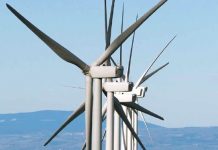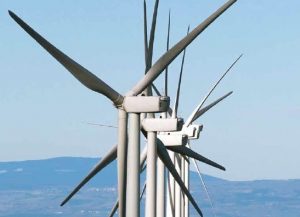
The U.S. offshore wind industry and supply chain reached major milestones in the second quarter of 2023 as installation began on the nation’s first two commercial-scale projects using components sourced from U.S. manufacturing facilities. These achievements are the result of a rapidly growing supply chain that has seen historic levels of investment in the last few years, including passage of the federal Inflation Reduction Act (IRA). These and other findings are detailed in the Business Network for Offshore Wind’s U.S. Offshore Wind Quarterly Market Report, which documents key investments announced over the past three months, growth in state demand for offshore wind, and notable policy advancements that drove the U.S. market forward between April and June 2023.
The network has also released a complementary Mid-Year Supply Chain Snapshot that highlights the accelerated growth experienced in just the past few years. While the U.S. market achieved a major milestone with the start of installation on the Vineyard Wind and South Fork Wind offshore projects, the Mid-Year Supply Chain Snapshot further profiles the development of the immense supply chain that is supporting the emerging industry. State demand has driven the market forward for years, but actions by the Biden-Harris administration to bring certainty to the permitting process and make historic investments in infrastructure and clean energy development have greatly accelerated supply chain growth.
The Snapshot details:
• A 272% increase in the number of U.S. market supplier contracts since 2021, according to the Network’s Market Dashboard, with 47% of that growth occurring since the IRA was signed in August 2022.
• 90% of contracts in the U.S. market going to companies that are either headquartered or have a presence in the U.S.
• A 169% increase in companies that have registered in the Network’s free offshore wind supply chain database since 2021, with a 54% increase since the IRA was signed.
• $16.6 billion in new market investments made since 2021 — more than quadruple the amount invested previously — with $7.7 billion of those investments made after the IRA was signed.
• A 100% increase in the number of vessels under construction or being retrofit in U.S. shipyards since 2021.
We are proud to say that we have steel in the water, steel in our factories, and steel in our shipyards today,” said Liz Burdock, founder and CEO of the Business Network for Offshore Wind. “Thanks to supportive federal and state policies, we are seeing unprecedented growth in the U.S. offshore wind supply chain across the nation. New contracts are signed daily with a vast majority going to small- and medium-sized American companies creating thousands of new jobs. With $7.7 billion in new U.S. offshore wind investments since the Inflation Reduction Act was signed into law, this is just the beginning. We will see many more factory openings, port revitalizations, and vessels under construction in the years to come.”
The historic commencement of the Vineyard Wind and South Fork Wind projects also yielded additional U.S. supply chain milestones. The two wind farms will feature the first U.S.-manufactured offshore substation, built in Texas, the first U.S.-manufactured export cables, from South Carolina, and the first run of critical steel foundation and tower components in Rhode Island. Unconnected to these projects, the U.S. supply chain also celebrated the first U.S.-assembled monopile foundation in Paulsboro, New Jersey.
The Network’s U.S. Offshore Wind Quarterly Market Report, which includes new data and analysis on market trends and advancements, provides additional context to the quickly developing market and its supply chain. The report details:
• The many recent firsts for the U.S. supply chain, including the first U.S.-built offshore wind substation and monopiles, along with the first cables manufactured for a U.S. commercial-scale project.
• New investments in steel manufacturing facilities in Ohio and Baltimore and a California port’s ambitious $4.7 billion plan for a major floating offshore wind facility.
• Economic headwinds that have forced projects in Massachusetts and New York to adjust their state financial agreements and led to new legislation passed in New Jersey aimed at supporting one of its projects.
• New offshore wind markets — adding to the existing 84 GW demand — in Delaware, Illinois, and Maine, which have all considered or advanced new procurement legislation, and Louisiana, which is negotiating with developers to advance projects in state waters.
MORE INFO offshorewindus.org/quarterly-report

























